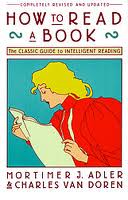Once a solid foundation for your mind has been built through the above considerations, you should work next at sharpening and refining your mind to its potential. Pushing your mind to places it does not go to on its own is the best way to accomplish this. In this session we will look at three ways to do just that. Finding ways to create with your mind is perhaps the best way possible to make it become better trained. Solving puzzles is also rich with benefits. And finally, using and strengthening your memory is a classic form of mind training. We will consider each in turn.
Creativity
How do you express the thoughts and feelings that you regularly have? Do you play a musical instrument? Do you paint, carve, sculpt, write, or any such creative activity? Such actions train the mind to consider ideas and things from varying angles. Finding new ways to look at or think about something is a key to great problem solving and becoming a better people person. If you don’t have a creative release for your mind, you should consider finding the time and resources to gain one. Some are “free” while others requires money and training to get started. But the point here is that your mind will become trained in new ways to think only as you find ways to push it in new directions.
We will develop some specific forms of expression more fully in the session on “Sharing Your Mind” but for now, make a list of possible creative endeavors that you currently enjoy or that you would like to start. Then try to find an hour or two here and there to add such to your life. In many cases, college life allows for such in the form of extracurricular activities. Join a play, a band, or a book club. Take an elective in the arts or some area of creativity. Choosing to do so will make your mind that much stronger and flexible. Consider the following statistics regarding this choice.
Puzzles
People have been opening up the creative side of their minds for a long time using various puzzles. From the ancient riddle, to the more recent crossword puzzle, to the current craze of online brain exercises, applying our minds to figure out the solution to a puzzle has been enjoyed by countless people wanting to unlock the creative portions of their minds. In a previous chapter you read an article from the Wall Street Journal citing research on how to keep the mind healthy. It mentions the debate over whether it is nutrition or puzzles that help the most. But “both/and” would seem the best position on this question. Eat right, and give yourself a puzzle every day.
In this section you can try a few of these puzzles out for yourself to see if you enjoy them. The following are simply examples of what you can do. Your own search and discussion of these things with others will no doubt unearth many more options.
Trying it Out:
The following pdf contains several types of word puzzles to give you a taste of these if you have never tried them before. We have included a question or two from these puzzles in our course assessment, so at least read it over whether or not you actually try them. The answers are in the back. Enjoy, and think.
Online Resources:
There are a lot of free online resources. There are a growing number of “pay to play” sites that offer challenges as well. Most would say the paid sites are better, but the final test is up to you. Listed below are a few of these sites, most of which allow for a free play or two to try them out.
http://www.mindexercisepuzzles.com/
http://www.braintraining101.com/
http://www.fitbrains.com/brain-games/
Growing Your Memory
Another major way you can train your mind is by starting and maintaining a method of memory exercise. A good thinker must have an active and strong memory. If you are in conversation with others, you must be able to recall what you know and remember what they teach you, even when paper or electronic resources are not close by. There are several common methods used to build up memory and keep it strong.
At the heart of the matter is the fact that your memory is much like a muscle. If you use it, you make it stronger, and if you stop using it, it will atrophy. Thus it is vital for a good thinker to have a systematic manner of keeping it strong and capable of providing the recall desired.
The first and most basic exercise is that of writing down what you want to remember. Things such as EverNote or OneNote and other files that allow you to cut and paste are valuable, but they are not adequate. Cutting and pasting is not the same as re-writing thoughts. When you come across something worth remembering, writing that item down (either by typing it or handwriting it) is the first step to a strong memory of that item.
Let us say you have been reading Aristotle and have come across his definition of “truth.” You think this short definition is great and want to keep it handy for those days when people seem to be rejecting the reality of truth. The first thing you should do is write it down.
The next step is to regularly review and read these quotes. Doing so will lock them into your memory. There are a number of apps for the portable media industry that allow you to either record yourself reading the quote or to upload quotes onto a device for regular review. It is most important that you develop a system that works for you and that you actually use it with discipline.
Having a book dedicated to this purpose is probably the best idea. Many call these blank books “commonplace” books. The concept is that by keeping your best ideas near one another you can easily review them regularly. This is a practice dating back many centuries and has been the source of much creativity and discovery in our world. Consider starting your own.
For more on the commonplace book, watch this brief video:













